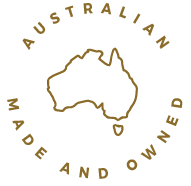All Quilts
Alpaca Range
Polyester quilts and pillows, the positives and negatives
October 10, 2016

Polyester in quilts and pillows has both positive and negative points
A while ago an experienced retailer asked me to explain why polyester quilts and pillows are so popular, and secondly, what do the terms "microloft", "microsoft" and "micro denier" mean. I was a little surprised that she didnt know and she was surprised by my answer. In this post I would like to discuss the realities of polyester fibre, its positive and negative attributes and its performance in bedding products.
Firstly, what is polyester?
Polyester is a chemically engineered synthetic textile fibre manufactured by extruding a liquid chemical polymer made from ethyelene glycol and terephthalic acid both derived from oil. In non-technical terms, it is a form of plastic. Polyester is a 100% synthetic chemical fibre made from a non-renewable source. It is not bio degradable or environmentally friendly. However, to give a balanced discussion, polyester is not toxic or harmful despite what it is made with.
The Positives -
- Polyester is a good insulating material (especially the newer styles of polyester fibre which have a hollow core to trap warm air)
- Polyester is durable (its actually almost indestructible)
- Polyester is durable and offers easy care (high temperature machine washing with chemical bleaches will not affect products filled with polyester fibres)
- Polyester is soft and has good loft & resiliency
- Polyester is cheap, readily available and easy to process
The Negatives -
- Polyester fibres are a chemical textile fibre made from oil, a non-renewable resource.
- Polyester fibre is hydrophobic i.e. it will not absorb any moisture. This explains why 100% polyester sheets aren't available!
So is polyester fibre suitable for bedding? In some cases, yes!
As an example, Kelly & Windsor supplies a contract customer with quilts and pillows filled with a specially engineered inherently flame retardant polyester. The pillows must meet strict performance requirements in unusual conditions i.e. the pillows must be inherently flame retardant, easy care, withstand high temperature industrial machine washing, bleach & chlorine resistant, quick drying, lightweight and durable, therefore, specialty polyester filled pillows are the best option. Another example is recreational sleeping bags where polyester filling is used because it's warm, lightweight, easy care and mildew resistant.
For domestic home use polyester bedding doesn't rate well because it doesn't absorb moisture or effectively wick moisture away from the body. The result is you having a hot sweaty night, certainly not conducive to a comfortable night's sleep.
What is micro denier polyester fibre?
Technically, micro denier polyester fibre has a fibre thickness of less than one denier. In bed quilts and pillows a micro denier polyester fibre filling will be very soft and have a very silky feel, however, it will not have a high resiliency i.e. loft due to its softness. The use of the word micro is just marketing talk and is often used to confuse and mislead consumers about the actual filling fibre's description.
While drafting this post, I came across an article that was an excellent example of marketing hype, 'we have range of quilts and pillows which blend silky-soft down-like microfibre with wool, they are known as Wool Touch Quilts'. I won't quote the source, but it is my opinion that this statement is deliberately misleading on several counts.
- The filling fibre may be a micro denier, but it doesn't actually state what the fibre is. Quilt manufacturers should be open with their customers and clearly state what's inside a quilt or pillow that they are selling.
- What is the blend ratio? Is it 99% polyester and 1% wool? Or maybe its 1% polyester and 99% wool. There is a big difference!
So, finally, why are polyester fibre filled quilts and pillows so popular?
Simple, it's a one word answer, price. There are many relevant factors which need to be taken into account when buying bed quilts and pillows. After all, everybody spends a considerable amount of time sleeping which is an essential part of life and the type and quality of a quilt's filling is essential.
Your quilt and pillow filling directly relates to your sleeping comfort and quality of sleep. Quality and suitability should be the priority, not the product's price. Quality, performance, features and benefits are surely more important to optimize one's sleeping comfort. Choose carefully and buy for your own well being. Its your health, your choice.
I hope that you have found this article helpful and I would appreciate receiving your comments.
Wishing you sleeping comfort!
Categories
Recent Articles
-
TOG ratings of bed quilts. What are they and are they useful in buying the right quilt?
March 22, 2024
-
1836 Merino, a new quilt range filled with Australia's finest pure merino wool
March 01, 2024
-
Introducing our new luxury alpaca quilt brand, Alpaca Royale
February 20, 2024
-
Super soft Tencel fabrics in Alpaca Royale & 1836 Merino Wool Quilts
February 12, 2024
-
Exciting news, an exclusive global agreement with Kangaroo Island Wool
February 09, 2024
Subscribe
Sign up to get the latest on sales, new releases and more …













